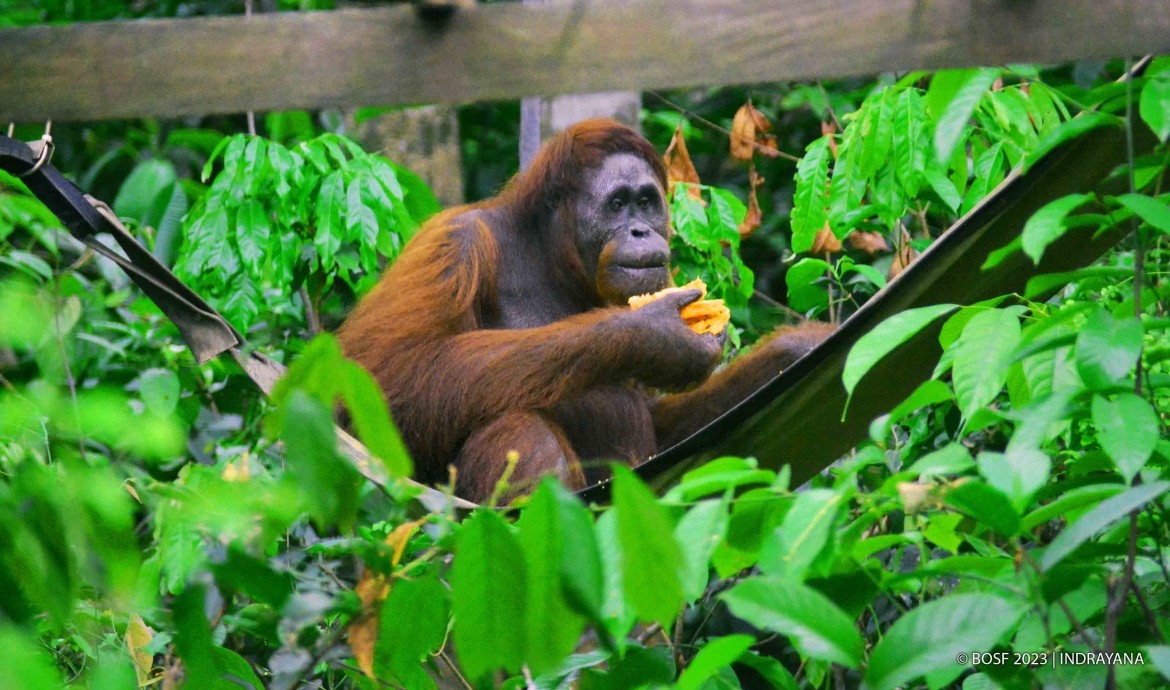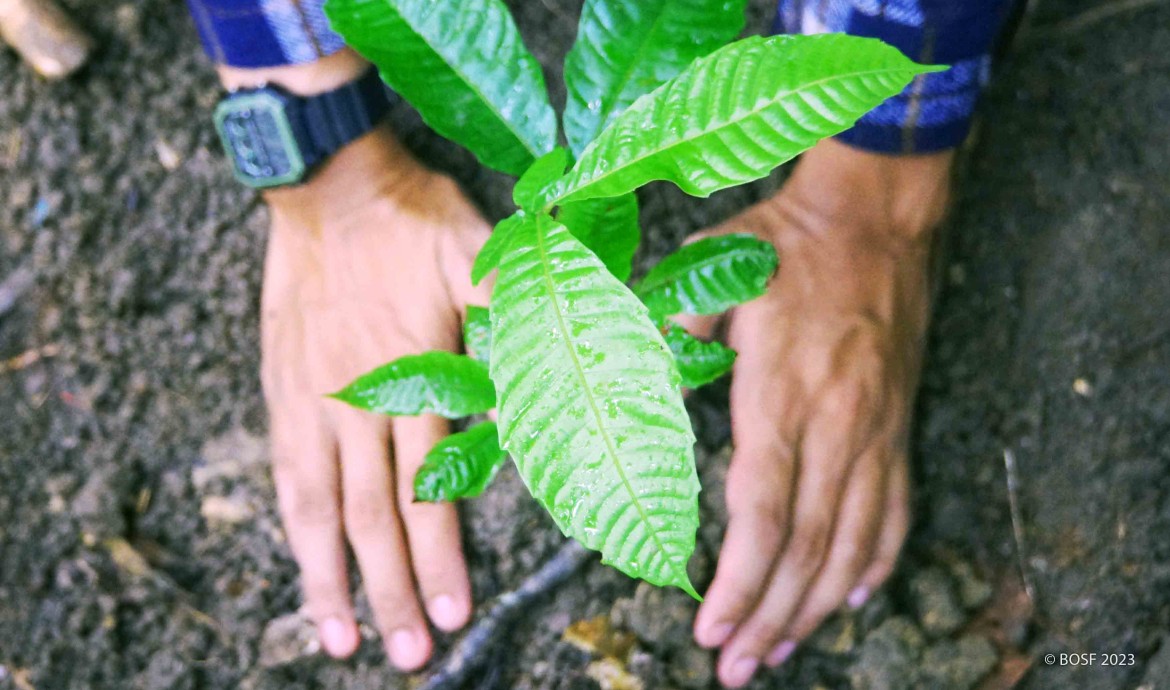Learning to Live With Our Forest-Dwelling Neighbors
Date Posted September 27, 2023
Text by: BOS Foundation Communications Team, BOS Headquarters, Bogor, West Java
Human population growth and the expansion of development into forest regions has the potential to lead to human-orangutan conflict. The natural distribution of orangutan populations outside conservation areas, such as in forests near communities and company concession areas, has contributed to an increase in conflict intensity.
With this in mind, the Borneo Orangutan Survival (BOS) Foundation, together with BOS Deutschland and Fairventures Worldwide (FVW), developed a human-orangutan conflict mitigation program under a mixed agroforestry system (OMAS). This collaborative program is seen as a step forward in mediating human-orangutan conflict by minimizing both parties' losses.
The program, supported by the Conservation and Natural Resources Agency (BKSDA) of Central Kalimantan and funded by the German Federal Ministry for Food and Agriculture, or Bundesministerium für Ernährung und Landwirtschaft (BMEL), ran from May 2020 to April 2023. The project’s orangutan conservation initiatives were aligned with economic, environmental, and social development by implementing best-management practices.
Mixed agroforestry
Mixed agroforestry systems involve the planting of native trees and farming crops on the same plot of land. With this strategy, trees are planted and spread throughout plantations in a variety of ways, forming a pattern of rows or aisles as barriers or buffers in windy areas.
The first stage in carrying out this program involved taking an inventory of fruit-producing and wood-producing species that could be planted concurrently. This agroforestry system, if correctly planned, provides vegetation that is beneficial to both humans and wildlife alike.
This application generally works best if land management is controlled through monitoring and good security, as well as other preventive methods. The alternative is to create barriers between forest and farmland areas using ditches, rivers or roads as the borders for patrols.
Wild Orangutans
When orangutans approach a farming area, land managers should remain calm and observe from a safe distance. It is important to note that wild orangutans are not aggressive and pose no threat to humans if left undisturbed. The recommended approach is to maintain a minimum of 20-25 meters with any orangutans as they are encouraged to go back into the forest. No dangerous tools such as snares, air guns or handmade rifles are permitted.
This system also provides long-term income for local residents— as well as benefits to the environment— by storing more carbon and controlling soil erosion. Through this strategy, land managers also contribute to increased biodiversity.




